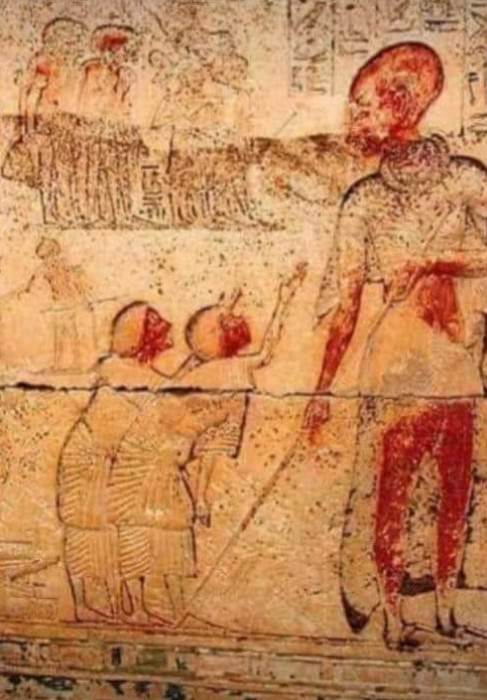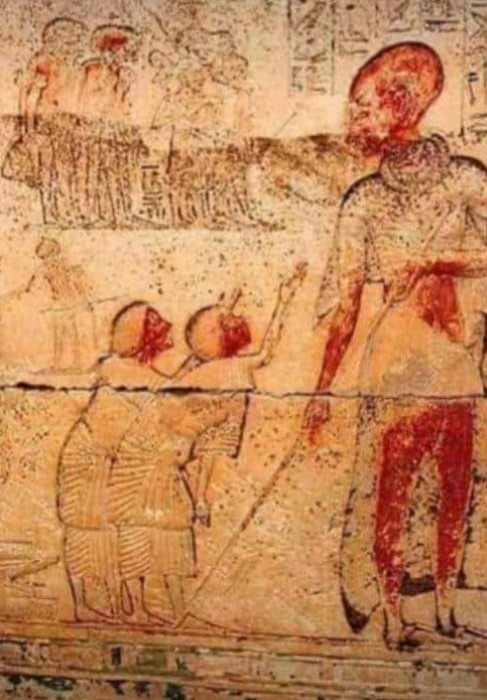Predynastic Kemet (Ancient Egypt) Suggests That The People Who Actually Built The Pyramids Were A Race Of Alien Giants With Elongated Skulls.

The mysteries surrounding Ancient Egypt and its awe-inspiring pyramids have long intrigued historians and enthusiasts. Delving into the era of Predynastic Kemet unveils a captivating theory suggesting that the builders of the pyramids were not mere mortals but a race of alien giants with elongated skulls. Join us on an archaeological journey as we explore this intriguing hypothesis, examining the evidence and unraveling the enigma of these otherworldly builders.

- Predynastic Kemet: Gateway to Egypt’s Ancient Past: The Predynastic period in Ancient Egypt serves as a crucial gateway to understanding the origins of one of the world’s most iconic civilizations. As we venture into this enigmatic era, the conventional narrative takes an unexpected turn, hinting at a presence that defies terrestrial norms.
- The Alien Giants Hypothesis: Elongated Skulls and Extraterrestrial Links: At the heart of this theory lies the notion that the individuals responsible for constructing the monumental pyramids were not of ordinary human descent. Instead, they were purportedly alien giants, distinguished by elongated skulls, raising questions about the conventional understanding of Ancient Egyptian civilization.
- Archaeological Clues and Artistic Depictions: Proponents of the alien giants hypothesis point to archaeological finds and artistic representations from Predynastic Kemet that seem to defy conventional human anatomy. Elongated skulls depicted in ancient art and unconventional burial practices spark intrigue, fueling speculation about an otherworldly influence.
- Building the Pyramids: Beyond Human Capabilities: The construction of the pyramids, a feat that has perplexed scholars for centuries, takes on new dimensions when viewed through the lens of the alien giants hypothesis. Could beings with elongated skulls and a purported extraterrestrial origin possess the advanced knowledge and capabilities required for such monumental architectural endeavors?
- Expert Opinions and Controversies: Unsurprisingly, the alien giants hypothesis has sparked debates within the archaeological community. While some experts dismiss it as speculative fiction, others argue that anomalies in archaeological evidence and depictions cannot be easily dismissed, prompting a reevaluation of established narratives.

- The SEO Landscape: Navigating Keywords and Online Interest: In the realm of SEO, the intrigue surrounding the alien giants hypothesis presents an opportunity to engage online audiences fascinated by alternative historical perspectives. Keywords such as “Predynastic Kemet elongated skulls,” “pyramid builders theory,” and “Ancient Egypt extraterrestrial connections” can help capture the attention of those exploring unconventional historical narratives.
The enigma of Predynastic Kemet and the purported existence of alien giants with elongated skulls behind the construction of Egypt’s pyramids adds a fascinating layer to the tapestry of Ancient Egyptian history. While the alien giants hypothesis remains a controversial and speculative theory, it challenges us to reassess preconceived notions and encourages a deeper exploration of the mysteries that shroud the origins of one of the world’s most enduring civilizations. As we continue to unravel the secrets of Predynastic Kemet, the possibility of an extraterrestrial connection adds a captivating chapter to the ongoing saga of Egypt’s ancient past.
Related Post
Beyond Pharaoh’s Legacy: Unearthing Extraterrestrial Clues in the Tomb of Ramesses II
Exposing the Real Story Behind Evidence Pointing to Earth Visits.
The reign of King Rama V (Thailand): Pictures of mysterious animals hunted by the noble group – srody.com
Was taken aback, leaving spectators perplexed, when images of a family taken with aliens 1,000 years ago were made public.
Leaked Information From NASA & The Pentagon: “The Anunnaki Are Returning To Earth” – DAILY NEWS
Video showing ‘alien’ at Miami mall sparks claims of invasion